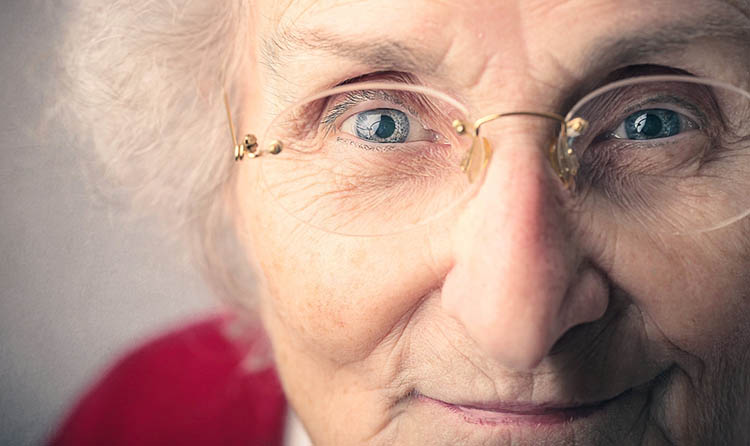As you age, you acquire a higher risk of developing certain eye diseases. Since early detection and treatment can often preserve vision, doctors recommend a comprehensive dilated eye exam for anyone over the age of 50. Here is an overview of the most common eye conditions found in this demographic:
1. Age-Related Macular Degeneration
According to the National Eye Institute, age-related macular degeneration is one of the leading causes of vision loss in the elderly. It involves erosion of the central visual field due to damage of the macula, a small structure near the middle of the retina. In the beginning stages, you may notice blurriness in your central vision; while in the advanced stages, black spots may develop that can make your performance of everyday activities challenging. No cure exists for the disease, but your doctor may advise healthful lifestyle practices or certain therapies, depending on the severity and type of your AMD.
2. Cataracts
The American Optometric Association describes cataracts as a cloudy area in the lens of the eye. Your early symptoms may include blurred vision, difficulty reading and glare, all of which may progress very slowly. If your condition is mild, a change in the prescription of your glasses may provide you with good vision. Once your cataract starts making driving unsafe or presents other serious problems, your doctor will recommend surgery. This procedure, typically done on an outpatient basis, involves removing the lens of the eye and replacing it with a plastic artificial lens. In the majority of cases, the intervention is very successful.

3. Glaucoma
A disease that destroys vision through damage to the optic nerve, glaucoma is caused by abnormally high pressure in the eye. The Mayo Clinic reports that no signs are associated with the initial stage of the most common variety, so you may not detect a change in your vision until the disorder is advanced. While your vision loss can’t be restored, it can be slowed if the condition is diagnosed early. Treatment typically begins with eye drops, but surgery and other therapies may be needed for more severe cases.
4. Retinopathy
One of the complications of diabetes, retinopathy involves damage to the blood vessels in the retina due to high sugar levels. The condition causes the blood vessels to leak, swell and occlude blood flow; and it sometimes produces the formation of new blood vessels. All of these effects can result in loss of your vision, warns the American Academy of Ophthalmology. Symptoms include blurred vision, floating spots or dark areas in the visual field. Controlling blood sugar and blood pressure can stop your vision loss; however, if such control can’t be attained, medications, laser surgery and other therapies may slow the advancement of your condition.
5. Dry Eye
The natural aging process can cause dry eye, a condition characterized by a lack of moisture in the organ. Although tears may flood your eye to compensate for the dryness, they are abnormal and fail to provide the lubrication needed. As dry eye tears are comprised mostly of water, they merely wash away debris rather than coat the eye. A gritty feeling, redness, itching and light sensitivity are signs that you have this condition. WebMD lists artificial drops and ointments, in addition to surgical procedures as treatment alternatives.
6. Presbyopia
Aging causes your eyes to lose the ability to focus on near objects or read small print. Symptoms of this condition called presbyopia include a headache, fatigue or eyestrain after doing close work or reading. If you need to hold a book or newspaper further away to see it clearly, it’s a telltale sign you have this affliction. Healthline says the treatment options involve non-prescriptive glasses, prescriptive glasses and surgery.